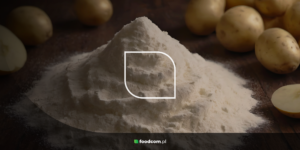Résumé
Table des matières
As you know, New Zealand has a reputation for producing high quality dairy products, including the recently in-demand butter. Given the recent increases in butter prices at the European market, and the consequent narrowing price gap between Europe and New Zealand, it might seem that exporting from Oceania is a win-win choice. But is it? Logistics and transportation costs are rising due to massive disruptions in the distribution stage of the supply chain. Reduced airline capacity and re-routing of cargo, coupled with blockades and isolation requirements, have led to delays in unloading cargo at ports and slowed vessel turnaround times.
SMP Manufacturers claim that Q2 sales have sold out, but end users are still not covered by Q2 sales. SMP prices are holding steady due to sufficient product being available. The problem is that there are not many buyers willing to pay current prices.
Recently, the SWP market has become tighter, even though some products appear to still be available. Exports of the product from the US at the moment are quite low. This is because of the increase in prices, which are currently higher compared to European prices. U.S. availability and inventories remain low as producers continue to prefer higher protein products. European SWP food prices increased to 1450 EUR/MT EXW for Food. Eastern European food SWP prices jump to 1400 EUR/MT EXW.
WPC80 availability is higher than WPI in both Europe and the US, resulting in more activity in these markets. Although trading volumes are still low, many buyers do not yet have Q2 coverage which could increase demand in the coming weeks causing market tightness. In Europe, we are already hearing of deals with prices around 13,000 EUR/MT EXW. European sellers see some demand for exports, but buyers are unwilling to buy at the current price.
FCMP valorization is still lower than SMP and Butter, and will remain so as long as SMP prices continue to rise globally. FCMP prices in Oceania are still cheaper than in Europe, although at last week’s GDT the WMP price was up 4%. Non-EU buyers are still not interested in European FCMP as there are many other cheaper markets.
Cheese prices keep going up along a broad front. There is still no overabundant supply, also there are almost no inventories and demand is good. Even big German retailers seem to accept price-hikes without much comment.
There are further increases in butter prices due to high demand and tight global supply. Demand for butter in Europe is high as buyers who failed to meet Q2 demand are returning to the market, pushing up prices.
Meanwhile It is also heard that shipments from New Zealand are delayed, making buyers unwilling to export the product. The pandemic and inflation rate has exposed New Zealand’s vulnerability to global supply chain disruption. If the emergence of new Covid-19 variants affects New Zealand’s major trading partners (China, Australia, the US, the EU and Japan), imported inflation will remain an issue throughout 2022. High European butter prices have caused prices in NZ to rise to EU levels. The EU butter price for this week is significantly higher than the Oceania butter.
In Western Europe, prices for liquids have fallen slightly (50 – 100 EUR/kg). SMC remains at 3400 EUR/MT – lower than in previous weeks. In general there is gradually more milk on the market, but still not at the same levels as in the same period last year. Prices are slowly dropping. SWC prices are similar to the rest of the liquids, the price has dropped slightly and the product is more readily available.
Powders
SMP Manufacturers claim that Q2 sales have sold out, but end users are still not covered by Q2 sales. SMP prices are holding steady due to sufficient product being available. The problem is that there are not many buyers willing to pay current prices.
Recently, the SWP market has become tighter, even though some products appear to still be available. Exports of the product from the US at the moment are quite low. This is because of the increase in prices, which are currently higher compared to European prices. U.S. availability and inventories remain low as producers continue to prefer higher protein products. European SWP food prices increased to 1450 EUR/MT EXW for Food. Eastern European food SWP prices jump to 1400 EUR/MT EXW.
WPC80 availability is higher than WPI in both Europe and the US, resulting in more activity in these markets. Although trading volumes are still low, many buyers do not yet have Q2 coverage which could increase demand in the coming weeks causing market tightness. In Europe, we are already hearing of deals with prices around 13,000 EUR/MT EXW. European sellers see some demand for exports, but buyers are unwilling to buy at the current price.
FCMP valorization is still lower than SMP and Butter, and will remain so as long as SMP prices continue to rise globally. FCMP prices in Oceania are still cheaper than in Europe, although at last week’s GDT the WMP price was up 4%. Non-EU buyers are still not interested in European FCMP as there are many other cheaper markets.
Cheese
Cheese prices keep going up along a broad front. There is still no overabundant supply, also there are almost no inventories and demand is good. Even big German retailers seem to accept price-hikes without much comment.
Butter
There are further increases in butter prices due to high demand and tight global supply. Demand for butter in Europe is high as buyers who failed to meet Q2 demand are returning to the market, pushing up prices.
Meanwhile It is also heard that shipments from New Zealand are delayed, making buyers unwilling to export the product. The pandemic and inflation rate has exposed New Zealand’s vulnerability to global supply chain disruption. If the emergence of new Covid-19 variants affects New Zealand’s major trading partners (China, Australia, the US, the EU and Japan), imported inflation will remain an issue throughout 2022. High European butter prices have caused prices in NZ to rise to EU levels. The EU butter price for this week is significantly higher than the Oceania butter.
Liquids
In Western Europe, prices for liquids have fallen slightly (50 – 100 EUR/kg). SMC remains at 3400 EUR/MT – lower than in previous weeks. In general there is gradually more milk on the market, but still not at the same levels as in the same period last year. Prices are slowly dropping. SWC prices are similar to the rest of the liquids, the price has dropped slightly and the product is more readily available.
Catégories







